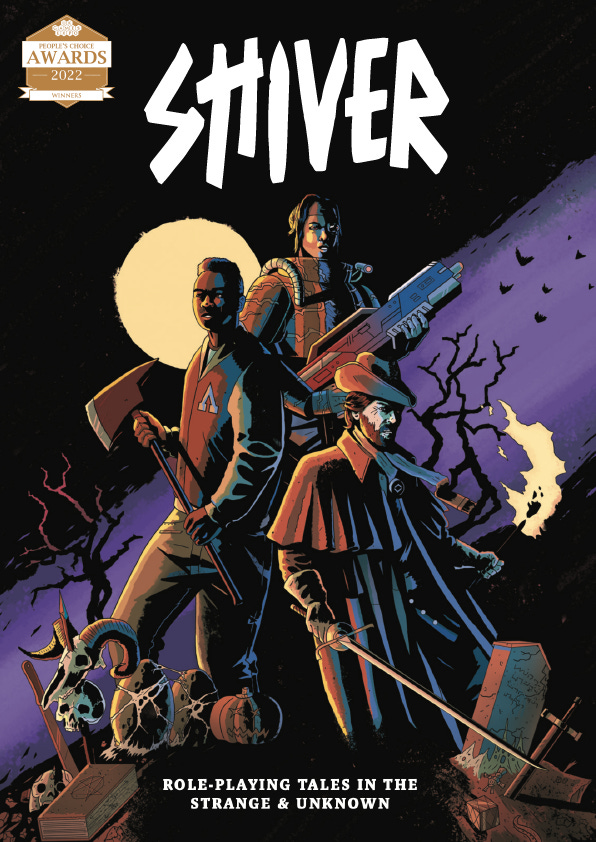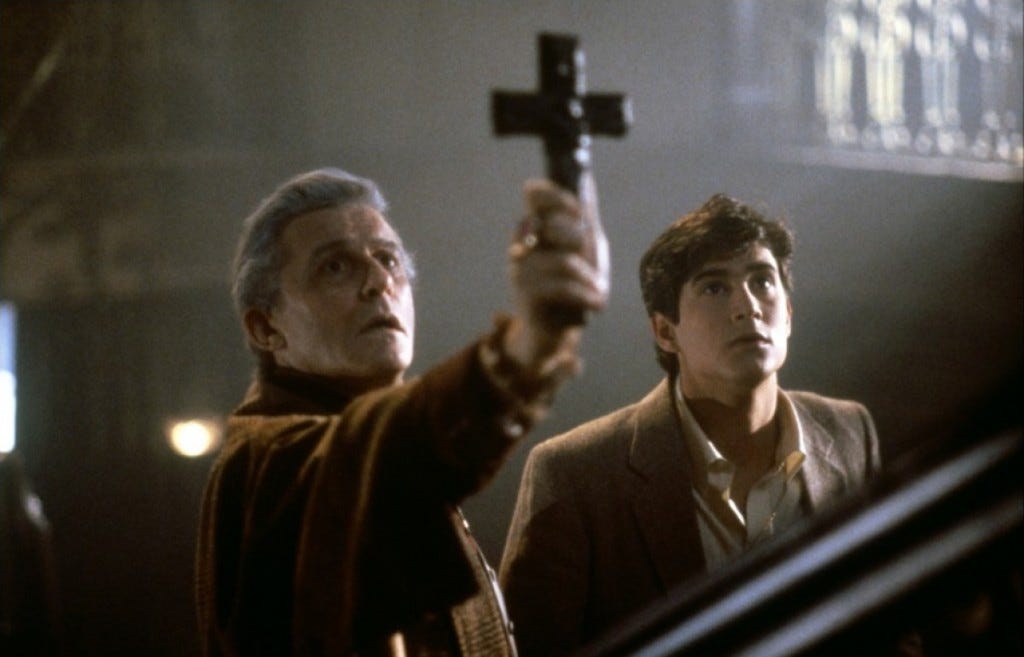Bad Academic Research and Free Wargames from Stanford
This week’s Weekly Geekly Oddity focuses on two semi-related pieces of news. The first is an article from the
’s excellent The Power of Us newsletter where they discuss the famous Stanford Prison Experiment and how it’s not as clear cut as you might think at first glance. The second piece is a link to Stanford’s Hoover Institution who have made a number of “professional” and academic Wargames available for us to play.The Stanford Prison Experiment and the Replication Crisis
You may or may not be aware that the social sciences, and psychology in particular, have experienced a major crisis in the past decade due to the fact that many of the key findings of the discipline cannot be replicated or when a replication is attempted it fails to produce the same results as the initial experiment. Given that the ability for experiments to be replicated is a key concept of the scientific process, this is a very significant problem that has had wide reaching consequences within academia. Academic have made major reforms and have published numerous projects re-examining past findings. Overall, this crisis has been a very good thing.
While it may have been bad for what we assumed we knew about human behavior, it has reinvigorated scientific rigor and will have net benefits. I have included copies of two articles discussing the problem, including the article that launched the re-examination, above for your reading pleasure. As good as the process has been for academia, it is sad that not all of the new findings have reached the public or even the eyes of science reporters. That’s one of the things that makes Jay Van Bavel and Dominic Packer’s series “Debunking Common Psychology Myths” so important.
One of my daughters, who loves that her dad studies political psychology, is taking a Junior level psychology class in high school and plans on taking the advanced psychology classes in the future. During her readings, she and her classmates read about Zimbardo’s Stanford Experiment and how people naturally enter into authoritarian behavior when they enter into a punitively custodial environment. The problem is that there are significant issues with the Zimbardo research in that there are numerous confounding issues that make the findings as reported deceptive. That’s not the way that Van Bavel and Packer describe the results in their critique, but it is the way I would describe them.
One of the key confounding elements of the study was that Zimbardo and his team conveyed to their participants (as you can read in the Power of Us article) what their goal was and aimed to persuade participants to act in ways that would help them achieve their goal. In other words, they appealed to participants to engage in a kind of Noble Lie in order to advance a just policy. The idea of the Noble Lie is as old as Plato who discussed the concept in both Book 3 of The Republic and in Book 12 of The Laws in the discussion of the Nocturnal Council.
The Just Lie is a well understood, though much debated, concept in the social sciences and philosophy, but it is one that empowers people to engage in immoral actions for a higher cause. The problem is that believing in Just Lies or Noble Lies can lead members of society to be manipulated toward negative, as well as positive ends due to social pressures. And the fact is that we have seen instances of what people perceive as Noble Lies from the Left and the Right, where they believe that telling a lie to create what they believe to be positive social change is a moral good. For them, the ends and means need not align. The problem is that the Noble Lie is a Lie and when it gets discovered, it can undermine the pursuit of the good you seek.
In the case of the Stanford Prison Experiment, Zimbardo and his team wanted to reform the Prison System (or end it) and viewed the creation of a lie about how it was corrupt and cruel in its very nature was a necessary lie. They told this to their participants who then behaved accordingly. The actual findings of the study were that people would like, and engage in cruelty, to advance what they thought was a noble goal. That is very different from what the findings purport to state, though they fall sharply into line with
’s discussion on public shaming. There is a lot to say on the issue, but Jay and Dominic do a fantastic job.Hoover Institute Wargames
I’m not going to go into great detail regarding the offerings at the Hoover Institute Wargames collection, but I will say that it is a treasure trove for those interested in hobby, professional, and academic wargames and how they intersect. Because of my own personal historical interests, I decided to examine a wargame simulation of The Seven Years’ War that was published as a thesis in 2019. I often joke that if I were made ruler of America tomorrow, I would declare war on Canada in order to have Quebec City returned to its rightful home in the United States. Quebec City is a beautiful location, as is Montreal, and it played a key role in The Seven Years’ War.
This particular simulation of the war demonstrates how closely related professional and hobby wargames are in design principles. One should note that the popular naval wargame Harpoon was the wargame Tom Clancy used to inform himself as he wrote The Hunt for Red October. Larry Bond, the author of this fun and publicly available game system, was a Naval Intelligence Officer. Let’s just say that it was clearly a fairly accurate simulation because people wondered where Clancy got such sensitive information. The Battle for Quebec isn’t as insightful as Harpoon, but like that older game it shows how interconnected the professional and hobby wargame markets are.
Weekly Film Article Cavalcade
The Lamentations of Luke Y. Thompson
With Terrifier 3 hitting theatres, Luke’s got the essential recap for fans (or newbs) to the series of films to read before they head to the theatres over at SlashFilm. If you are one of those expecting to be disappointed by the new Joker film, then you might want to check out The Terrifier series with its horrific clown action. Earlier this year, Luke wrote an article on the evolution of the clown at the center of the Terrifier movies. In an era where movies are constantly being remade, or made into sequels, its interesting to read about the emergence of a new concept. Even if that concept becomes a new instance of the sequel phenomenon.
Glimpses from the Substackosphere and Bloggerverse
Since it’s the end of Cimmerian September I thought I’d finish it off with a video of a song that is a mashup of Howardian Ideas and a Neil Young classic. I think it’s a fun tune and I’ve listened to it about five times now.
While I participated a lot in my private life in Cimmerian September, mostly reading the excellent Marvel Omnibus editions of the comic, I did release a YouTube video discussing one of my favorite Conan stories.
It is not the first LP dedicated to the Dungeons & Dragons game though, that would be First Quest: The Music. The First Quest double LP includes some very interesting songs and a dungeon for you to use in play. It’s an item that is hard to find in physical form, but which you can listen to for the very low cost of free.
Better known than the First Quest album was the 2001 Official Soundtrack for Dungeons & Dragons by Midnight Syndicate. This album is heavily synth based and was the CD I used to play before every D&D session I ran. Lately, I’ve shifted to just using The Anvil of Crom as the song I use to let players know that it’s time to shift from metagaming conversation mode to play mode. The Midnight Syndicate album is good and they have a couple more “unofficial” collections that make for good background music as well.
Jim has a lot of interesting content in last month’s
that ranges from upcoming products from Black Site Studios, the new Star Trek RPG, and the Star Schlock Skirmish Battle Game. I think that Star Schlock looks like a lot of fun and will pair nicely with Crooked Dice’s 7TV skirmish game in tone. has an interesting discussion about why he is such a proponent of being an OD&D Purist and sticking with the original D&D rules rather than playing with updated rules sets. One of the things that struck me was how he argues that the limited rules, which have a lot of holes, not only allow but encourage game masters to push the boundaries of their imagination in ways that newer “more complete” rules sets do not. After all, rules “bound” our perception of the world they simulate and OD&D has very few actual rules and sometimes the rules are confusing enough that you have to make up your own. That’s how we got Tunnels & Trolls after all.Role Playing Game Recommendation
Shiver from Parable Games is a game I hadn’t heard of prior to backing the Kickstarter for the “Gothic” expansion to the game, but I’m glad I discovered it. Stylistically, I think it’s a really cool game, but I am most fond of its mechanics. It’s a simple die pool system where players have statistics with an “Attribute” rating and a “Talent” rating. These are combined to create die pools of differing types and you try to roll successes to achieve actions. All fine and good and typical so far, but when you look at the talent die you notice a little echo of John Harper’s Lasers & Feelings. The talent die has different possibilities when used on mundane or arcane actions. I will do a longer review later, but this is a very cool game.
I’ll give a more complete review in the future, but I highly recommend checking it out.
Music Recommendation
It’s October and that means “The Scary Season” is in full force. To that end all of my music recommendations for the month will have a “horror” theme.
We’ll start things off with The Maesto himself, Franz Liszt, and his classic symphony Totentanz or Dance of the Dead. The piece isn’t creepy, but it’s a ton of fun and you can visualize the dancing.
Speaking of visualizing the dance, Camille Saint-Saëns’ masterful composition Danse Macabre is one of my all time favorite classical pieces. It opens with the dreaded Tri-tone, aka The Devil’s Interval, and then transitions into a playful melody. Those of you who are fans of the film Tombstone will recognize the piece instantly from the stage production in the movie.
What would an October music list be without Helloween? I’m not sure when I first heard the shrill falsetto shriek of lead singer Kai Hansen, but as a fan of Queensrÿche I was all in. Helloween isn’t as good as Queensrÿche, but the lyrics are playful and in tune with the season.
While I’m sure I’ll be including some Danzig music this month, the first Misfits tune I selected is Dig Up Her Bones. I love the basic melody and think of this as a top 10 “introductory” horror punk songs. Horror punk is a great genre of music, but like horror movies it can get a bit obscure and challenging for the neophyte. Dig Up Her Bones has some pop sensibilities, but a good horror theme. It’s the musical equivalent to Monster Squad that lets you introduce someone to The Hills Have Eyes at a later date.
Speaking of more obscure horror punk, but equally accessible and “tame” lyrically, is Electric Frankenstein. I’ve never understood why this band, who are a truly great rock band, didn’t get more traction. Maybe it’s because when you see them in concert, it’s more like watching your buddies from work show up and kick ass than it is watching a really angry punk group or a highly produced stage show. Regardless, they’ve got a couple of kick ass tunes and they will be featured again this month.
Classic Film Recommendation
I debated which version of this film to recommend. Conceptually, Tom Holland’s film Fright Night is a masterpiece of high concept. What if Dracula moved next door to a teenaged horror fan? Holland’s 1985 delivers well on the premise with Chris Sarandon and Roddy McDowell contributing strong performances as the Vampire and the has been horror actor facing real horror for the first time.
The opening five minutes are a bit dated and detract from the likability of the movie’s protagonist. The character re-earns your fondness, but it takes a bit of work. I enjoyed the more recent remake and it has a much more likeable main protagonist, but it was Roddy McDowell’s performance as Peter Vincent that put it over the top for me. McDowell manages to simultaneously channel both Peter Cushing and the schlocky local horror host into a character you really root for.
The moment that Peter Vincent (McDowell) realizes he is in a horror movie for real, is an all-time great horror movie moment. While the film itself isn’t scary, it is very effective and fun.














If people like those two Terrfier lists, they can make it a trifecta. https://www.slashfilm.com/1665612/things-about-terrifier-series-make-no-sense/
I feel like they're mainly for casuals who want to know about these movies but maybe can't stomach actually watching them.
Good call on the "Dig up Her Bones" recommendation. This time of year, I typically listen to that album and especially the follow-up Famous Monsters as much as the Danzig-era Misfits.